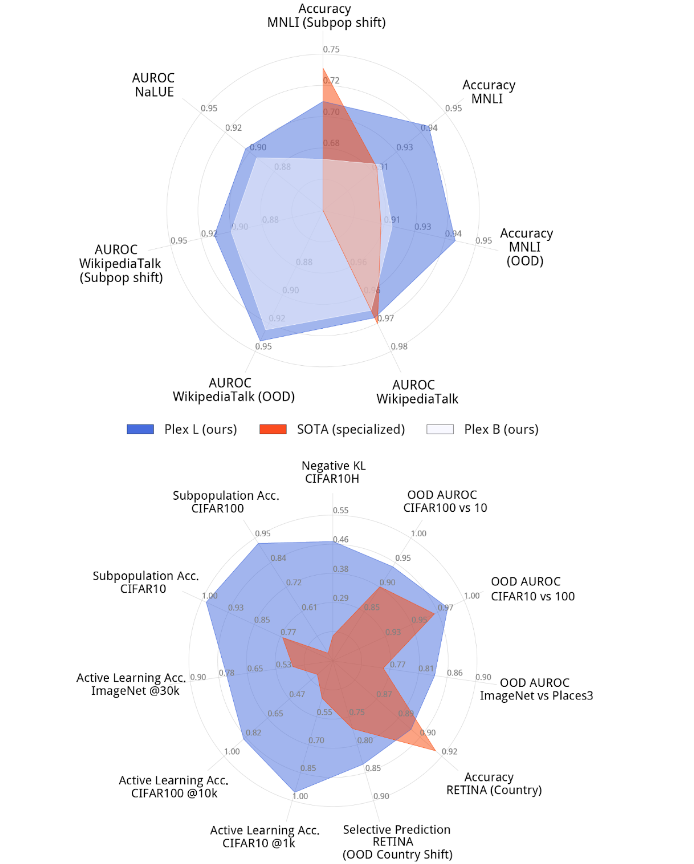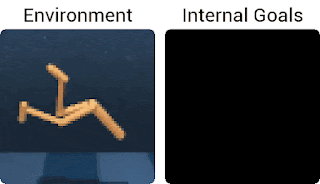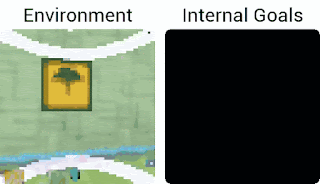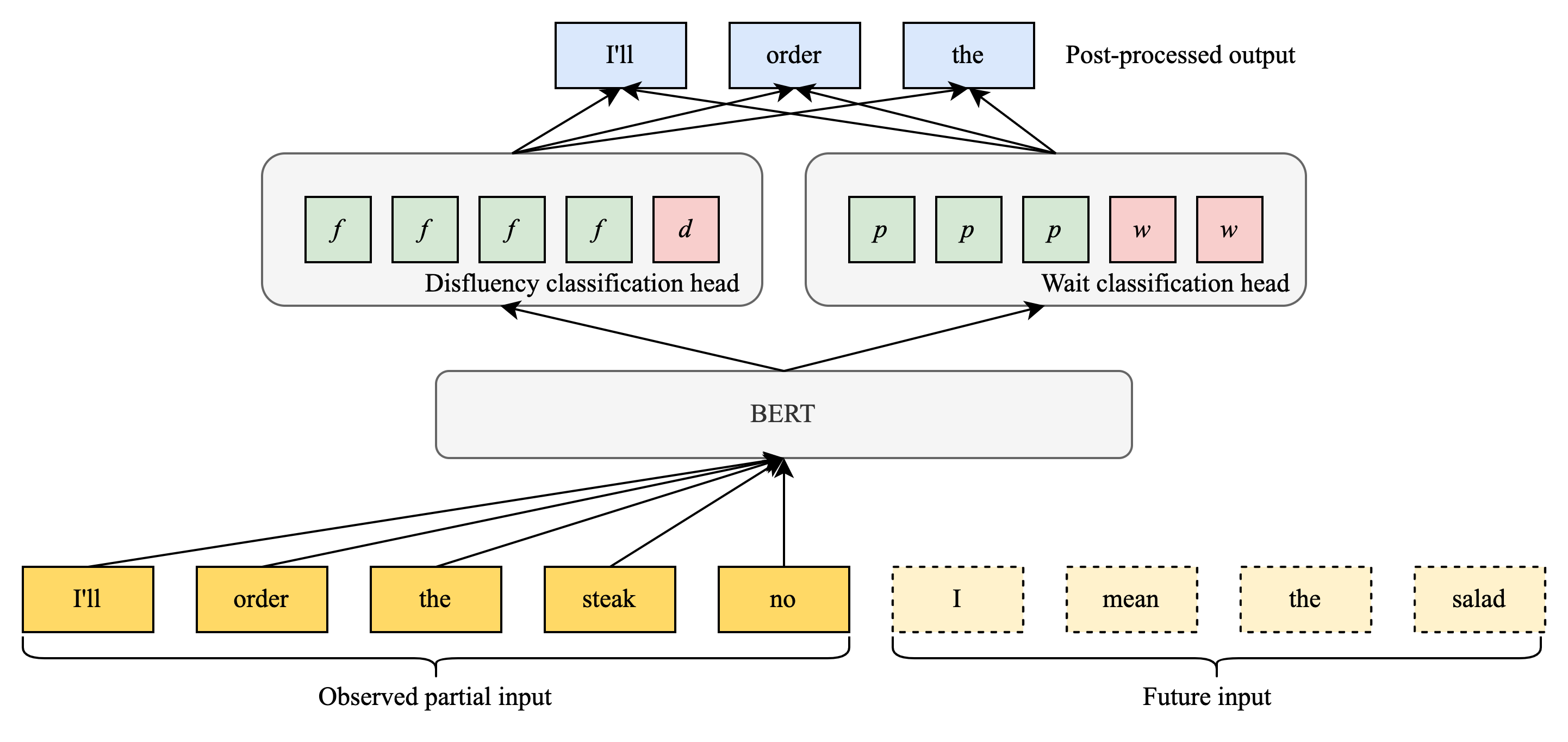Posted by Cat Armato, Program Manager, University Relations
Google is a leader in machine learning (ML) research with groups innovating across virtually all aspects of the field, from theory to application. We build machine learning systems to solve deep scientific and engineering challenges in areas of language, music, visual processing, algorithm development, and more. Core to our approach is to actively engage with the broader research community by open-sourcing datasets and models, publishing our discoveries, and actively participating in leading conferences.
Google is proud to be a Diamond Sponsor of the thirty-ninth International Conference on Machine Learning (ICML 2022), a premier annual conference, which is being held this week in Baltimore, Maryland. Google has a strong presence at this year’s conference with over 100 accepted publications and active involvement in a number of workshops and tutorials. We look forward to sharing some of our extensive ML research and expanding our partnership with the broader ML research community.
Registered for ICML 2022? We hope you’ll visit the Google booth to learn more about the exciting work, creativity, and fun that goes into solving a portion of the field’s most interesting challenges. Take a look below to learn more about the Google research being presented at ICML 2022 (Google affiliations in bold).
Organizing Committee
Tutorial Chairs include: Hanie Sedghi
Emeritus Members include: Andrew McCallum
Board Members include: Hugo Larochelle, Csaba Szepesvari, Corinna Cortes
Publications
Individual Preference Stability for Clustering
Saba Ahmadi, Pranjal Awasthi, Samir Khuller, Matthäus Kleindessner, Jamie Morgenstern, Pattara Sukprasert, Ali Vakilian
Head2Toe: Utilizing Intermediate Representations for Better Transfer Learning
Utku Evci, Vincent Dumoulin, Hugo Larochelle, Michael Mozer
H-Consistency Bounds for Surrogate Loss Minimizers
Pranjal Awasthi, Anqi Mao, Mehryar Mohri, Yutao Zhong
Cooperative Online Learning in Stochastic and Adversarial MDPs
Tal Lancewicki, Aviv Rosenberg, Yishay Mansour
Do More Negative Samples Necessarily Hurt in Contrastive Learning?
Pranjal Awasthi, Nishanth Dikkala, Pritish Kamath
Deletion Robust Submodular Maximization Over Matroids
Paul Dütting, Federico Fusco*, Silvio Lattanzi, Ashkan Norouzi-Fard, Morteza Zadimoghaddam
Tight and Robust Private Mean Estimation with Few Users
Hossein Esfandiari, Vahab Mirrokni, Shyam Narayanan*
Generative Trees: Adversarial and Copycat
Richard Nock, Mathieu Guillame-Bert
Agnostic Learnability of Halfspaces via Logistic Loss
Ziwei Ji*, Kwangjun Ahn*, Pranjal Awasthi, Satyen Kale, Stefani Karp
Adversarially Trained Actor Critic for Offline Reinforcement Learning
Ching-An Cheng, Tengyang Xie, Nan Jiang, Alekh Agarwal
Unified Scaling Laws for Routed Language Models
Aidan Clark, Diego de Las Casas, Aurelia Guy, Arthur Mensch, Michela Paganini, Jordan Hoffmann, Bogdan Damoc, Blake Hechtman, Trevor Cai, Sebastian Borgeaud, George van den Driessche, Eliza Rutherford, Tom Hennigan, Matthew Johnson, Albin Cassirer, Chris Jones, Elena Buchatskaya, David Budden, Laurent Sifre, Simon Osindero, Oriol Vinyals, Marc’Aurelio Ranzato, Jack Rae, Erich Elsen, Koray Kavukcuogu, Karen Simonyan
Large Batch Experience Replay
Thibault Lahire, Matthieu Geist, Emmanuel Rachelson
Robust Training of Neural Networks Using Scale Invariant Architectures
Zhiyuan Li*, Srinadh Bhojanapalli, Manzil Zaheer, Sashank J. Reddi, Sanjiv Kumar
The Poisson Binomial Mechanism for Unbiased Federated Learning with Secure Aggregation
Wei-Ning Chen, Ayfer Ozgur, Peter Kairouz
Global Optimization Networks
Sen Zhao, Erez Louidor, Maya Gupta
A Joint Exponential Mechanism for Differentially Private Top-k
Jennifer Gillenwater, Matthew Joseph, Andres Munoz Medina, Mónica Ribero
On the Practicality of Deterministic Epistemic Uncertainty
Janis Postels, Mattia Segu, Tao Sun, Luc Van Gool, Fisher Yu, Federico Tombari
Balancing Discriminability and Transferability for Source-Free Domain Adaptation
Jogendra Nath Kundu, Akshay Kulkarni, Suvaansh Bhambri, Deepesh Mehta, Shreyas Kulkarni, Varun Jampani, Venkatesh Babu Radhakrishnan
Transfer and Marginalize: Explaining Away Label Noise with Privileged Information
Mark Collier, Rodolphe Jenatton, Efi Kokiopoulou, Jesse Berent
In Defense of Dual-Encoders for Neural Ranking
Aditya Menon, Sadeep Jayasumana, Ankit Singh Rawat, Seungyeon Kim, Sashank Jakkam Reddi, Sanjiv Kumar
Surrogate Likelihoods for Variational Annealed Importance Sampling
Martin Jankowiak, Du Phan
Translatotron 2: High-Quality Direct Speech-to-Speech Translation with Voice Preservation (see blog post)
Ye Jia, Michelle Tadmor Ramanovich, Tal Remez, Roi Pomerantz
Differentially Private Approximate Quantiles
Haim Kaplan, Shachar Schnapp, Uri Stemmer
Continuous Control with Action Quantization from Demonstrations
Robert Dadashi, Léonard Hussenot, Damien Vincent, Sertan Girgin, Anton Raichuk, Matthieu Geist, Olivier Pietquin
Data Scaling Laws in NMT: The Effect of Noise and Architecture
Yamini Bansal*, Behrooz Ghorbani, Ankush Garg, Biao Zhang, Maxim Krikun, Colin Cherry, Behnam Neyshabur, Orhan Firat
Debiaser Beware: Pitfalls of Centering Regularized Transport Maps
Aram-Alexandre Pooladian, Marco Cuturi, Jonathan Niles-Weed
A Context-Integrated Transformer-Based Neural Network for Auction Design
Zhijian Duan, Jingwu Tang, Yutong Yin, Zhe Feng, Xiang Yan, Manzil Zaheer, Xiaotie Deng
Algorithms for the Communication of Samples
Lucas Theis, Noureldin Yosri
Being Properly Improper
Tyler Sypherd, Richard Nock, Lalitha Sankar
Guarantees for Epsilon-Greedy Reinforcement Learning with Function Approximation
Chris Dann, Yishay Mansour, Mehryar Mohri, Ayush Sekhari, Karthik Sridharan
Why Should I Trust You, Bellman? The Bellman Error is a Poor Replacement for Value Error
Scott Fujimoto, David Meger, Doina Precup, Ofir Nachum, Shixiang Shane Gu
Public Data-Assisted Mirror Descent for Private Model Training
Ehsan Amid, Arun Ganesh*, Rajiv Mathews, Swaroop Ramaswamy, Shuang Song, Thomas Steinke, Vinith M. Suriyakumar*, Om Thakkar, Abhradeep Thakurta
Deep Hierarchy in Bandits
Joey Hong, Branislav Kveton, Sumeet Katariya, Manzil Zaheer, Mohammad Ghavamzadeh
Scalable Deep Reinforcement Learning Algorithms for Mean Field Games
Mathieu Lauriere, Sarah Perrin, Sertan Girgin, Paul Muller, Ayush Jain, Theophile Cabannes, Georgios Piliouras, Julien Perolat, Romuald Elie, Olivier Pietquin, Matthieu Geist
Faster Privacy Accounting via Evolving Discretization
Badih Ghazi, Pritish Kamath, Ravi Kumar, Pasin Manurangsi
HyperPrompt: Prompt-Based Task-Conditioning of Transformers
Yun He*, Huaixiu Steven Zheng, Yi Tay, Jai Gupta, Yu Du, Vamsi Aribandi, Zhe Zhao, YaGuang Li, Zhao Chen, Donald Metzler, Heng-Tze Cheng, Ed H. Chi
Blocks Assemble! Learning to Assemble with Large-Scale Structured Reinforcement Learning
Seyed Kamyar, Seyed Ghasemipour, Daniel Freeman, Byron David, Shixiang Shane Gu, Satoshi Kataoka, Igor Mordatch
Latent Diffusion Energy-Based Model for Interpretable Text Modelling
Peiyu Yu, Sirui Xie, Xiaojian Ma, Baoxiong Jia, Bo Pang, Ruiqi Gao, Yixin Zhu, Song-Chun Zhu, Ying Nian Wu
On the Optimization Landscape of Neural Collapse Under MSE Loss: Global Optimality with Unconstrained Features
Jinxin Zhou, Xiao Li, Tianyu Ding, Chong You, Qing Qu, Zhihui Zhu
Efficient Reinforcement Learning in Block MDPs: A Model-Free Representation Learning Approach
Xuezhou Zhang, Yuda Song, Masatoshi Uehara, Mengdi Wang, Alekh Agarwal, Wen Sun
Robust Training Under Label Noise by Over-Parameterization
Sheng Liu, Zhihui Zhu, Qing Qu, Chong You
FriendlyCore: Practical Differentially Private Aggregation
Eliad Tsfadia, Edith Cohen, Haim Kaplan, Yishay Mansour, Uri Stemmer
Adaptive Data Analysis with Correlated Observations
Aryeh Kontorovich, Menachem Sadigurschi,Uri Stemmer
A Resilient Distributed Boosting Algorithm
Yuval Filmus, Idan Mehalel, Shay Moran
On Learning Mixture of Linear Regressions in the Non-Realizable Setting
Avishek Ghosh, Arya Mazumdar,Soumyabrata Pal, Rajat Sen
Online and Consistent Correlation Clustering
Vincent Cohen-Addad, Silvio Lattanzi, Andreas Maggiori, Nikos Parotsidis
From Block-Toeplitz Matrices to Differential Equations on Graphs: Towards a General Theory for Scalable Masked Transformers
Krzysztof Choromanski, Han Lin, Haoxian Chen, Tianyi Zhang, Arijit Sehanobish, Valerii Likhosherstov, Jack Parker-Holder, Tamas Sarlos, Adrian Weller, Thomas Weingarten
Parsimonious Learning-Augmented Caching
Sungjin Im, Ravi Kumar, Aditya Petety, Manish Purohit
General-Purpose, Long-Context Autoregressive Modeling with Perceiver AR
Curtis Hawthorne, Andrew Jaegle, Cătălina Cangea, Sebastian Borgeaud, Charlie Nash, Mateusz Malinowski, Sander Dieleman, Oriol Vinyals, Matthew Botvinick, Ian Simon, Hannah Sheahan, Neil Zeghidour, Jean-Baptiste Alayrac, Joao Carreira, Jesse Engel
Conformal Prediction Sets with Limited False Positives
Adam Fisch, Tal Schuster, Tommi Jaakkola, Regina Barzilay
Dialog Inpainting: Turning Documents into Dialogs
Zhuyun Dai, Arun Tejasvi Chaganty, Vincent Zhao, Aida Amini, Qazi Mamunur Rashid, Mike Green, Kelvin Guu
Benefits of Overparameterized Convolutional Residual Networks: Function Approximation Under Smoothness Constraint
Hao Liu, Minshuo Chen, Siawpeng Er, Wenjing Liao, Tong Zhang, Tuo Zhao
Congested Bandits: Optimal Routing via Short-Term Resets
Pranjal Awasthi, Kush Bhatia, Sreenivas Gollapudi, Kostas Kollias
Provable Stochastic Optimization for Global Contrastive Learning: Small Batch Does Not Harm Performance
Zhuoning Yuan, Yuexin Wu, Zihao Qiu, Xianzhi Du, Lijun Zhang, Denny Zhou, Tianbao Yang
Examining Scaling and Transfer of Language Model Architectures for Machine Translation
Biao Zhang*, Behrooz Ghorbani, Ankur Bapna, Yong Cheng, Xavier Garcia, Jonathan Shen, Orhan Firat
GLaM: Efficient Scaling of Language Models with Mixture-of-Experts (see blog post)
Nan Du, Yanping Huang, Andrew M. Dai, Simon Tong, Dmitry Lepikhin, Yuanzhong Xu, Maxim Krikun, Yanqi Zhou, Adams Wei Yu, Orhan Firat, Barret Zoph, Liam Fedus, Maarten Bosma, Zongwei Zhou, Tao Wang, Yu Emma Wang, Kellie Webster, Marie Pellat, Kevin Robinson, Kathy Meier-Hellstern, Toju Duke, Lucas Dixon, Kun Zhang, Quoc V Le, Yonghui Wu, Zhifeng Chen, Claire Cui
How to Leverage Unlabeled Data in Offline Reinforcement Learning?
Tianhe Yu, Aviral Kumar, Yevgen Chebotar, Karol Hausman, Chelsea Finn, Sergey Levine
Distributional Hamilton-Jacobi-Bellman Equations for Continuous-Time Reinforcement Learning
Harley Wiltzer, David Meger, Marc G. Bellemare
On the Robustness of CountSketch to Adaptive Inputs
Edith Cohen, Xin Lyu, Jelani Nelson, Tamás Sarlós, Moshe Shechner, Uri Stemmer
Model Selection in Batch Policy Optimization
Jonathan N. Lee, George Tucker, Ofir Nachum, Bo Dai
The Fundamental Price of Secure Aggregation in Differentially Private Federated Learning
Wei-Ning Chen, Christopher A. Choquette-Choo, Peter Kairouz, Ananda Theertha Suresh
Linear-Time Gromov Wasserstein Distances Using Low Rank Couplings and Costs
Meyer Scetbon, Gabriel Peyré, Marco Cuturi*
Active Sampling for Min-Max Fairness
Jacob Abernethy, Pranjal Awasthi, Matthäus Kleindessner, Jamie Morgenstern, Chris Russell, Jie Zhang
Making Linear MDPs Practical via Contrastive Representation Learning
Tianjun Zhang, Tongzheng Ren, Mengjiao Yang, Joseph E. Gonzalez, Dale Schuurmans, Bo Dai
Achieving Minimax Rates in Pool-Based Batch Active Learning
Claudio Gentile, Zhilei Wang, Tong Zhang
Private Adaptive Optimization with Side Information
Tian Li, Manzil Zaheer, Sashank J. Reddi, Virginia Smith
Self-Supervised Learning With Random-Projection Quantizer for Speech Recognition
Chung-Cheng Chiu, James Qin, Yu Zhang, Jiahui Yu, Yonghui Wu
Wide Bayesian Neural Networks Have a Simple Weight Posterior: Theory and Accelerated Sampling
Jiri Hron, Roman Novak, Jeffrey Pennington, Jascha Sohl-Dickstein
The State of Sparse Training in Deep Reinforcement Learning
Laura Graesser, Utku Evci, Erich Elsen, Pablo Samuel Castro
Constrained Discrete Black-Box Optimization Using Mixed-Integer Programming
Theodore P. Papalexopoulos, Christian Tjandraatmadja, Ross Anderson, Juan Pablo Vielma, David Belanger
Massively Parallel k-Means Clustering for Perturbation Resilient Instances
Vincent Cohen-Addad, Vahab Mirrokni, Peilin Zhong
What Language Model Architecture and Pre-training Objective Works Best for Zero-Shot Generalization?
Thomas Wang, Adam Roberts, Daniel Hesslow, Teven Le Scao, Hyung Won Chung, Iz Beltagy, Julien Launay, Colin Raffel
Model Soups: Averaging Weights of Multiple Fine-Tuned Models Improves Accuracy Without Increasing Inference Time
Mitchell Wortsman, Gabriel Ilharco, Samir Yitzhak Gadre, Rebecca Roelofs, Raphael Gontijo-Lopes, Ari S. Morcos, Hongseok Namkoong, Ali Farhadi, Yair Carmon, Simon Kornblith, Ludwig Schmidt
Synergy and Symmetry in Deep Learning: Interactions Between the Data, Model, and Inference Algorithm
Lechao Xiao, Jeffrey Pennington
Fast Finite Width Neural Tangent Kernel
Roman Novak, Jascha Sohl-Dickstein, Samuel S. Schoenholz
The Combinatorial Brain Surgeon: Pruning Weights that Cancel One Another in Neural Networks
Xin Yu, Thiago Serra, Srikumar Ramalingam, Shandian Zhe
Bayesian Imitation Learning for End-to-End Mobile Manipulation
Yuqing Du, Daniel Ho, Alexander A. Alemi, Eric Jang, Mohi Khansari
HyperTransformer: Model Generation for Supervised and Semi-Supervised Few-Shot Learning
Andrey Zhmoginov, Mark Sandler, Max Vladymyrov
Marginal Distribution Adaptation for Discrete Sets via Module-Oriented Divergence Minimization
Hanjun Dai, Mengjiao Yang, Yuan Xue, Dale Schuurmans, Bo Dai
Correlated Quantization for Distributed Mean Estimation and Optimization
Ananda Theertha Suresh, Ziteng Sun, Jae Hun Ro, Felix Yu
Language Models as Zero-Shot Planners: Extracting Actionable Knowledge for Embodied Agents
Wenlong Huang, Pieter Abbeel, Deepak Pathak, Igor Mordatch
Only Tails Matter: Average-Case Universality and Robustness in the Convex Regime
Leonardo Cunha, Gauthier Gidel, Fabian Pedregosa, Damien Scieur, Courtney Paquette
Learning Iterative Reasoning through Energy Minimization
Yilun Du, Shuang Li, Josh Tenenbaum, Igor Mordatch
Interactive Correlation Clustering with Existential Cluster Constraints
Rico Angell, Nicholas Monath, Nishant Yadav, Andrew McCallum
Building Robust Ensembles via Margin Boosting
Dinghuai Zhang, Hongyang Zhang, Aaron Courville, Yoshua Bengio, Pradeep Ravikumar, Arun Sai Suggala
Probabilistic Bilevel Coreset Selection
Xiao Zhou, Renjie Pi, Weizhong Zhang, Yong Lin, Tong Zhang
Model Agnostic Sample Reweighting for Out-of-Distribution Learning
Xiao Zhou, Yong Lin, Renjie Pi, Weizhong Zhang, Renzhe Xu, Peng Cui, Tong Zhang
Sparse Invariant Risk Minimization
Xiao Zhou, Yong Lin, Weizhong Zhang, Tong Zhang
RUMs from Head-to-Head Contests
Matteo Almanza, Flavio Chierichetti, Ravi Kumar, Alessandro Panconesi, Andrew Tomkins
A Parametric Class of Approximate Gradient Updates for Policy Optimization
Ramki Gummadi, Saurabh Kumar, Junfeng Wen, Dale Schuurmans
On Implicit Bias in Overparameterized Bilevel Optimization
Paul Vico, Jonathan Lorraine, Fabian Pedregosa, David Duvenaud, Roger Grosse
Feature and Parameter Selection in Stochastic Linear Bandits
Ahmadreza Moradipari, Berkay Turan, Yasin Abbasi-Yadkori, Mahnoosh Alizadeh, Mohammad Ghavamzadeh
Neural Network Poisson Models for Behavioural and Neural Spike Train Data
Moein Khajehnejad, Forough Habibollahi, Richard Nock, Ehsan Arabzadeh, Peter Dayan and Amir Dezfouli
Deep Equilibrium Networks are Sensitive to Initialization Statistics
Atish Agarwala, Samuel Schoenholz
A Regret Minimization Approach to Multi-Agent Control
Udaya Ghai, Udari Madhushani, Naomi Leonard, Elad Hazan
Transformer Quality in Linear Time
Weizhe Hua, Zihang Dai, Hanxiao Liu, Quoc V. Le
Workshops
Shift Happens: Crowdsourcing Metrics and Test Datasets Beyond ImageNet
Organizing Committee includes: Roland S. Zimmerman
Invited Speakers include: Chelsea Finn, Lucas Beyer
Machine Learning for Audio Synthesis
Organizing Committee includes: Yu Zhang
Invited Speakers include: Chris Donahue
New Frontiers in Adversarial Machine Learning
Organizing Committee includes: Sanmi Koyejo
Spurious Correlations, Invariance, and Stability (SIC)
Organizing Committee includes: Victor Veitch
DataPerf: Benchmarking Data for Data-Centric AI
Organizing Committee includes: Lora Aroyo, Peter Mattson, Praveen Paritosh
DataPerf Speakers include: Lora Aroyo, Peter Mattson, Praveen Paritosh
Invited Speakers include: Jordi Pont-Tuset
Machine Learning for Astrophysics
Invited Speakers include: Dustin Tran
Dynamic Neural Networks
Organizing Committee includes: Carlos Riquelme
Panel Chairs include: Neil Houlsby
Interpretable Machine Learning in Healthcare (IMLH)
Organizing Committee includes: Ramin Zabih
Invited Speakers include: Been Kim
Human-Machine Collaboration and Teaming
Invited Speakers include: Fernanda Viégas, Martin Wattenberg, Yuhuai (Tony) Wu
Pre-training: Perspectives, Pitfalls, and Paths Forward
Organizing Committee includes: Hugo Larochelle, Chelsea Finn
Invited Speakers include: Hanie Sedgh, Charles Sutton
Responsible Decision Making in Dynamic Environments
Invited Speakers include: Craig Boutilier
Principles of Distribution Shift (PODS)
Organizing Committee includes: Hossein Mobahi
Hardware-Aware Efficient Training (HAET)
Invited Speakers include: Tien-Ju Yang
Updatable Machine Learning
Invited Speakers include: Chelsea Finn, Nicolas Papernot
Organizing Committee includes: Ananda Theertha Suresh, Badih Ghazi, Chiyuan Zhang, Kate Donahue, Peter Kairouz, Ziteng Sun
Knowledge Retrieval and Language Models
Invited Speakers include: Fernando Diaz, Quoc Le, Kenton Lee, Ellie Pavlick
Organizing Committee includes: Urvashi Khandelwal, Chiyuan Zhang
Theory and Practice of Differential Privacy
Organizing Committee includes: Badih Ghazi, Matthew Joseph, Peter Kairouz, Om Thakkar, Thomas Steinke, Ziteng Sun
Beyond Bayes: Paths Towards Universal Reasoning Systems
Invited Speakers include: Charles Sutton
Spotlight Talk: Language Model Cascades | David Dohan, Winnie Xu, Jacob Austin, David Bieber, Raphael Gontijo Lopes, Yuhuai Wu, Henryk Michalewski, Rif A. Saurous, Jascha Sohl-dickstein, Kevin Murphy, Charles Sutton
Safe Learning for Autonomous Driving (SL4AD)
Invited Speakers include: Chelsea Finn
*Work done while at Google. ↩
Read More














































.png)




